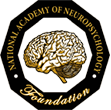 Common warning signs include sudden:
Common warning signs include sudden:
- Weakness or numbness of face, arm, or leg, especially on one side of the body
- Difficulty speaking, understanding, and/or seeing
- Difficulty walking, poor balance, or coordination
- Lightheadedness
- Severe headache
Common symptoms following a stroke:
- Hemiparesis (muscle weakness on one side of the body opposite to the affected brain region)
- Hemiplegia (paralysis on one side of the body opposite to the affected brain region)
- Sensory loss
- Cognitive impairment (e.g., language, memory, and problem solving)
- Changes in personality and behavior
- Vision impairment (e.g., visual field loss)
- Muscle spasticity
- Difficulty swallowing
- Seizures
- Depression
- Sleep disturbance
- Fatigue
Cognition after a Stroke
Lasting cognitive deficits occur in over half of stroke survivors. Individuals are at risk for a range of cognitive symptoms, which depend on the area of the brain that was affected. For example, the left hemisphere typically controls language processing. Therefore, individuals who experience a stroke affecting specific brain regions in the left hemisphere have language issues and are often diagnosed with aphasias (communication disorders). The blood supply that was involved in an individual’s stroke determines the affected brain region and can provide information about expected cognitive symptoms. Common cognitive symptoms by blood supple are listed below.
| BLOOD SUPPLY |
POSSIBLE SYMPTOMS BY HEMISPHERE |
| Anterior Cerebral Artery | Left: Deficits in expressive language and executive functioning (planning and organizing daily tasks) Right: Difficulty processing and using emotional and social information |
| Middle Cerebral Artery | Left: Deficits in using or understanding language, executive function, and verbal memory Right: Hemineglect (ignoring sensory information on one side) and difficulty dressing |
| Posterior Cerebal Artery | Left: Deficits in verbal memory, reading, and writing Right: Memory loss and neglect for visual information |
Cognitive symptoms in children: Children typically present with different concerns and cognitive profiles because of both the impact and resiliency of the developing brain. When children experience a stroke they are at risk for developing developmental delays, Attention Deficit Hyperactivity Disorder (ADHD), Autism Spectrum Disorder, and Specific Learning Disorders. Despite these concerns, children have more brain plasticity than adults and can often rewire brain pathways to accommodate for damage.
Treatments
Prevention: Healthy lifestyle changes, such as exercise, avoiding smoking, and heart healthy diets are often recommended for prevention.
Immediate Interventions: For ischemic strokes, some patients may benefit from medications called thrombolytics, which quickly dissolve blood clots. Surgeries may also be done to control for swelling, bleeding, or remove a clot.
After a stroke: Aspirin and other medications may be prescribed to decrease the risk of future blood clots forming. Many patients go through rehabilitation to recover abilities affected by the stroke. Multidisciplinary teams including physical, occupational, and speech/language therapy are often involved in rehabilitation. Neuropsychologists are frequently involved in assessing cognitive skills throughout recovery and providing recommendations to optimize cognitive and behavioral functioning.


